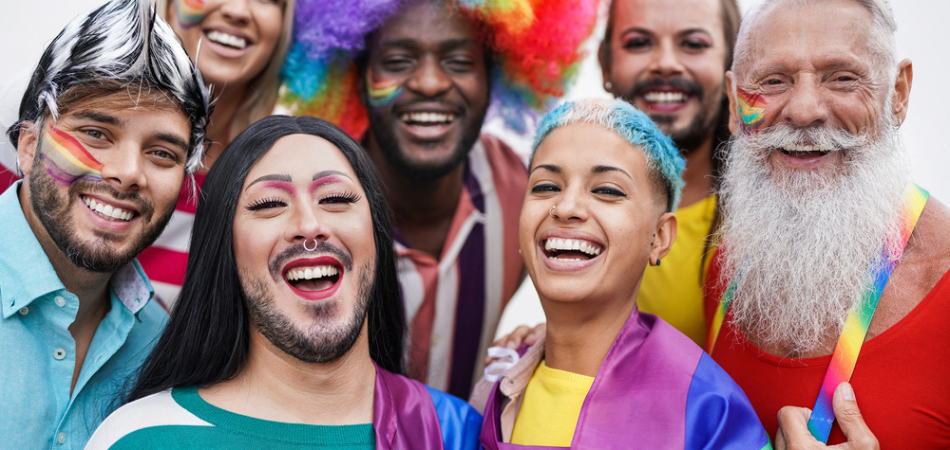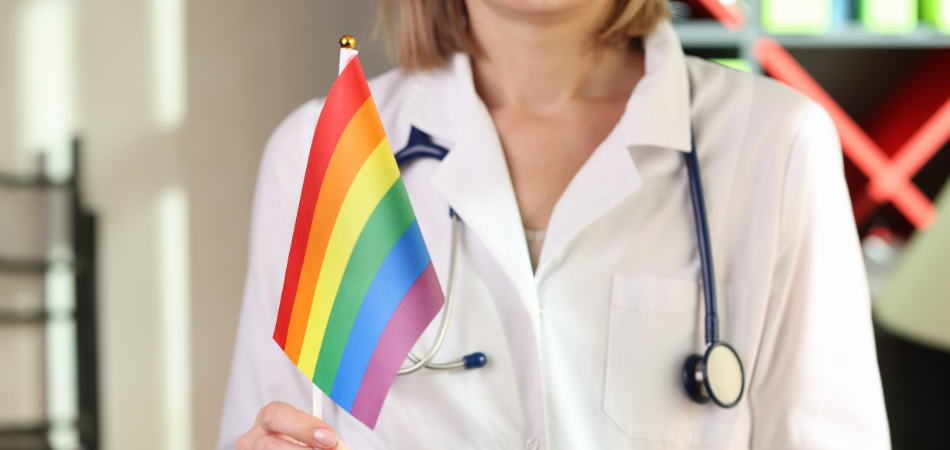Last Updated:
March 28th, 2025

Society and culture have come a long way in recent decades in terms of LGBTQ+ acceptance. From decriminalisation to the legalisation of gay marriage, LGBTQ+ people experience less legal discrimination and more freedom to be who they are.
However, there is still some way to go before complete equality is achieved. Stonewall reports that 21% of LGBTQ+ people were a victim of a hate crime in 2017.
Discrimination, isolation and addiction are all closely related – and the lack of freedom to be honest and be yourself can impact your relationship with substances. We’re going to take a look at the relationship between addiction and discrimination and the transformative power of freeing yourself from shame.
Addiction and the LGBTQ+ community.
Rates of alcohol and drug addiction are higher in the LGBTQ+ community – but they don’t affect everyone under the umbrella in the same way, or at the same rate.
Historically, LGBTQ+ culture is closely linked to bars and clubs. This was a matter of safety – venues based around drinking and other substances were some of the only places where LGBTQ+ could meet privately and be (somewhat) free from harassment. This presents difficulties for LGBTQ+ people in recovery – it can be difficult to meet other LGBTQ+ people without going to bars and clubs. Continuing to visit them means exposure to substances while avoiding them can mean loneliness and isolation from the community.
Within the LGBTQ+ community, substance misuse disorders for illicit drugs are about twice as high for gay and bisexual men than amongst men in general, and alcohol misuse is about one-third higher. Stimulant use is about three times higher among gay and bisexual men.
Gay and bisexual women are more likely to abuse alcohol than heterosexual women – but they are also more likely to seek help for their addiction.
One noticeable element of studies on same-sex attracted people is that bisexuals tend to be studied in the same category as gay men and lesbians, meaning data on substance misuse in the bisexual community is sparse – and data exclusively focusing on bisexual women or bisexual men is almost non-existent. One study suggests that a bisexual identity is associated with a risk of substance misuse higher than both an exclusively gay or heterosexual identity.
Studies on addiction in the trans community are rare. One review found higher rates across all addictions, including nicotine, in the trans community. It also found that generally, trans men misused substances more than trans women, except methamphetamine.
Examining patterns of substance misuse within the LGBTQ+ community raises some interesting questions. There are solid theories as to why substance misuse is higher in the community, but we aren’t yet sure why this use manifests differently between subgroups.
The connection between identity struggles and substance abuse
The most common theory used to explain why substance misuse is higher in the LGBTQ+ community is minority stress. The isolation and discrimination that is associated with minority status lead to self-medication using substances. This self-medication numbs feelings of shame, loneliness and anxiety associated with being an outsider.
This may explain why bisexuality is associated with higher levels of substance misuse. Bisexuals can be seen as a minority within a minority and can sometimes struggle to be fully accepted by both heterosexuals and the gay community.
Isolation, stigma and addiction
A lack of both self-acceptance and acceptance from society can significantly contribute to loneliness – and loneliness is much higher in people who struggle with addiction.
People who lack acceptance from their peers also lack the support to confront and seek help for their substance misuse, which worsens the cycle of addiction. A lack of support from friends and immediate family can delay a person from entering inpatient rehab.
Loneliness is associated with a whole host of other factors which are also linked to addiction – poor mental and physical health, low self-esteem, and high-risk behaviours.
Loneliness is a natural outcome of feeling shame in one’s identity and needing to hide your true self. Addiction treatment centres must be mindful of the negative effects of shame, isolation and loneliness to ensure the best treatment possible can be provided.

The importance of inclusivity in addiction treatment centres
Getting treatment for an addiction is a brave step, and is very often a vulnerable time for a person. Very few people will risk entering an unsafe environment in a time of high vulnerability. On a very basic level, a lack of safety in addiction treatment triggers identity concealment and relapse. This also risks confirming the LGBTQ+ person’s suspicions that treatment is not a safe place for them and will cause them to avoid pursuing treatment again in the future.
Negotiating the negative effects of withdrawal and finding the inner strength to be open and honest to engage with therapy is difficult to navigate without external support, and many LGBTQ+ people who face estrangement from their immediate family can have fewer resources to call upon. Additionally, if an LGBTQ+ person feels that they have to remain closeted to access treatment and that a treatment centre won’t be a safe location for them, they are more likely to avoid getting the help they need. This is why addiction treatment centres must be inclusive spaces.
A supportive and empathetic approach, with staff who are trained on the struggles specific to the LGBTQ+ community, provides a safer environment and improves treatment outcomes.
Inclusive LGBTQ+ treatment should take into account the higher rates of trauma in the LGBTQ+ community – LGBTQ+ people have an increased risk of PTSD, meaning treatment should be trauma-informed where appropriate.
LGBTQ+ people may also face the challenges of addiction treatment with smaller support groups. Group therapy with other LGBTQ+ individuals can be an excellent way of reducing isolation and forming bonds with others who have faced the same struggles.
Pride as an antidote to shame
In the UK, 4% of the population identifies as LGBTQ+ in some way. While this is a small percentage, this means that there are millions of LGBTQ+ people across the country – and that LGBTQ+ people aren’t alone.
Shame is the opposite of pride – and shame is highly associated with addiction.(10) Addressing shame is an important aspect of addiction recovery. However, while many people in addiction recovery will experience shame around their substance misuse and the ways it has made them act, people with a minority identity may experience additional shame about who they are.
Modern LGBTQ+ pride events are celebratory and often combine parades, dancing, parties – and substances. This can be difficult and alienating to someone struggling with addiction. However, the history of pride is much more than drinking and partying – it is a history of strength and struggle.
LGBTQ+ people were not just handed their rights – they had to fight for them, through street protests, direct action, the legal system and in workplaces.
The history of LGBTQ+ pride is a history of fighting for the freedom to be yourself. Advocating for yourself, struggling for a better future and being proud of who you are are all integral parts of LGBTQ+ history.
Forging links with others, building community and learning LGBTQ+ history can be a powerful antidote to shame.






